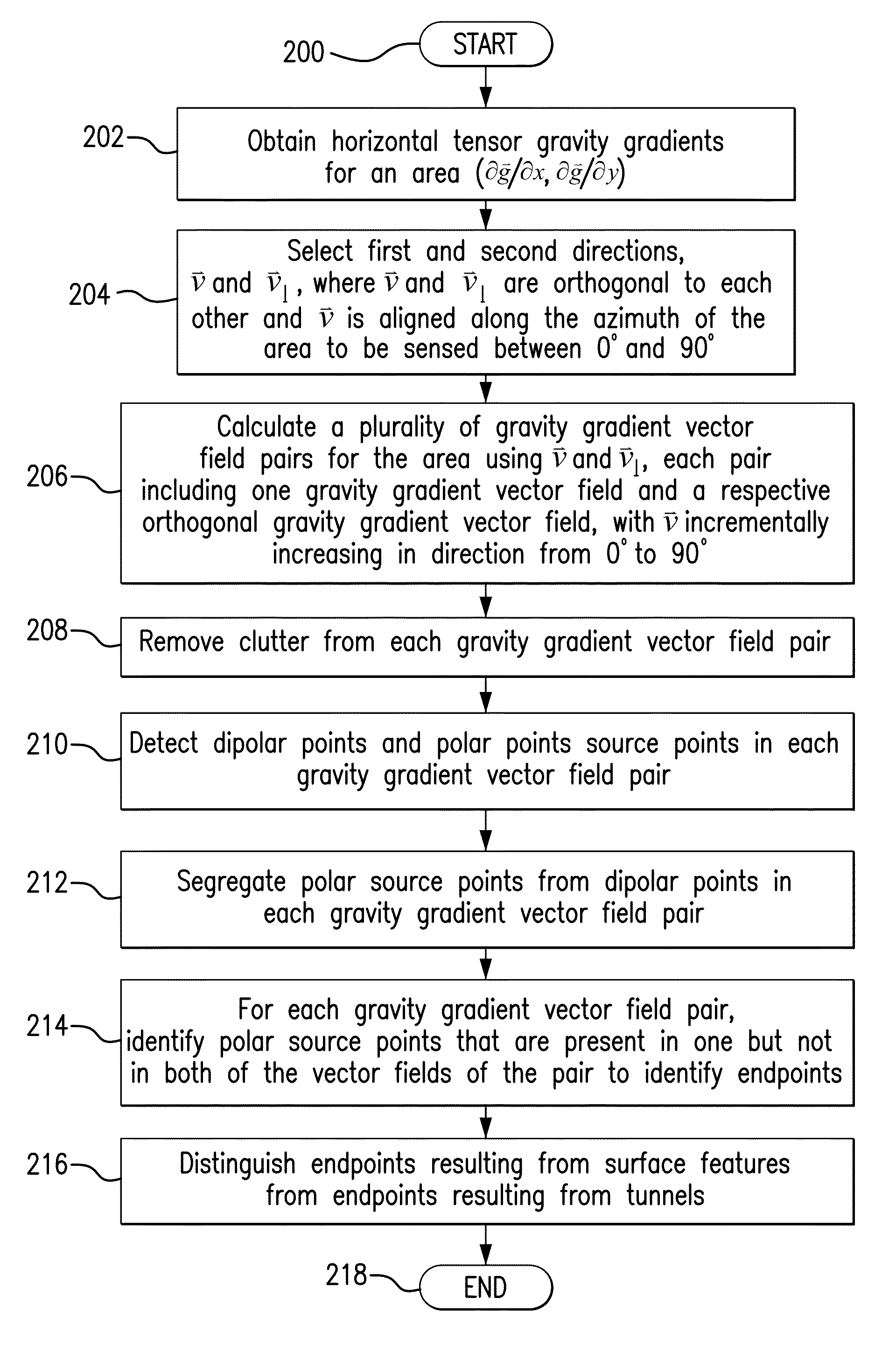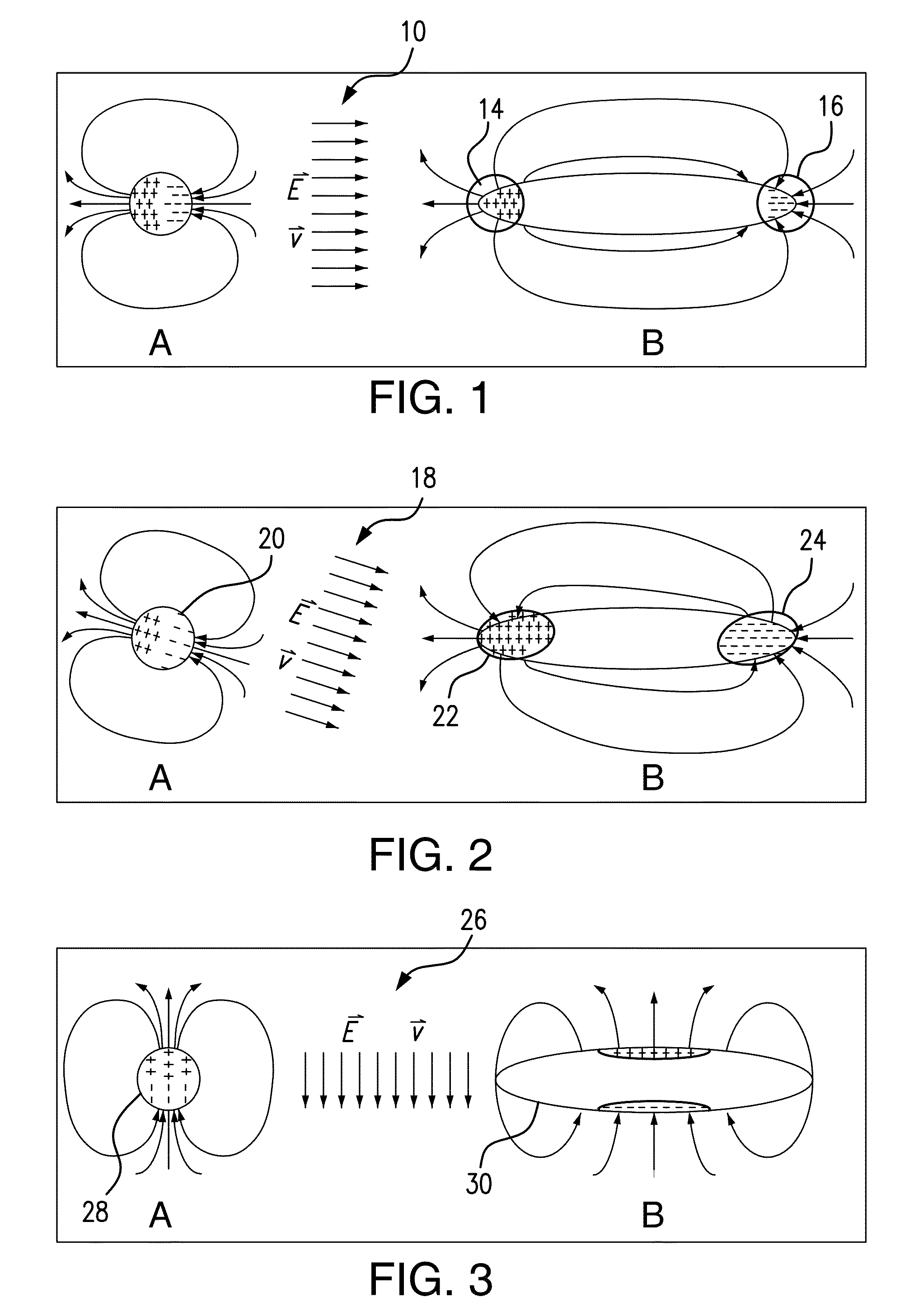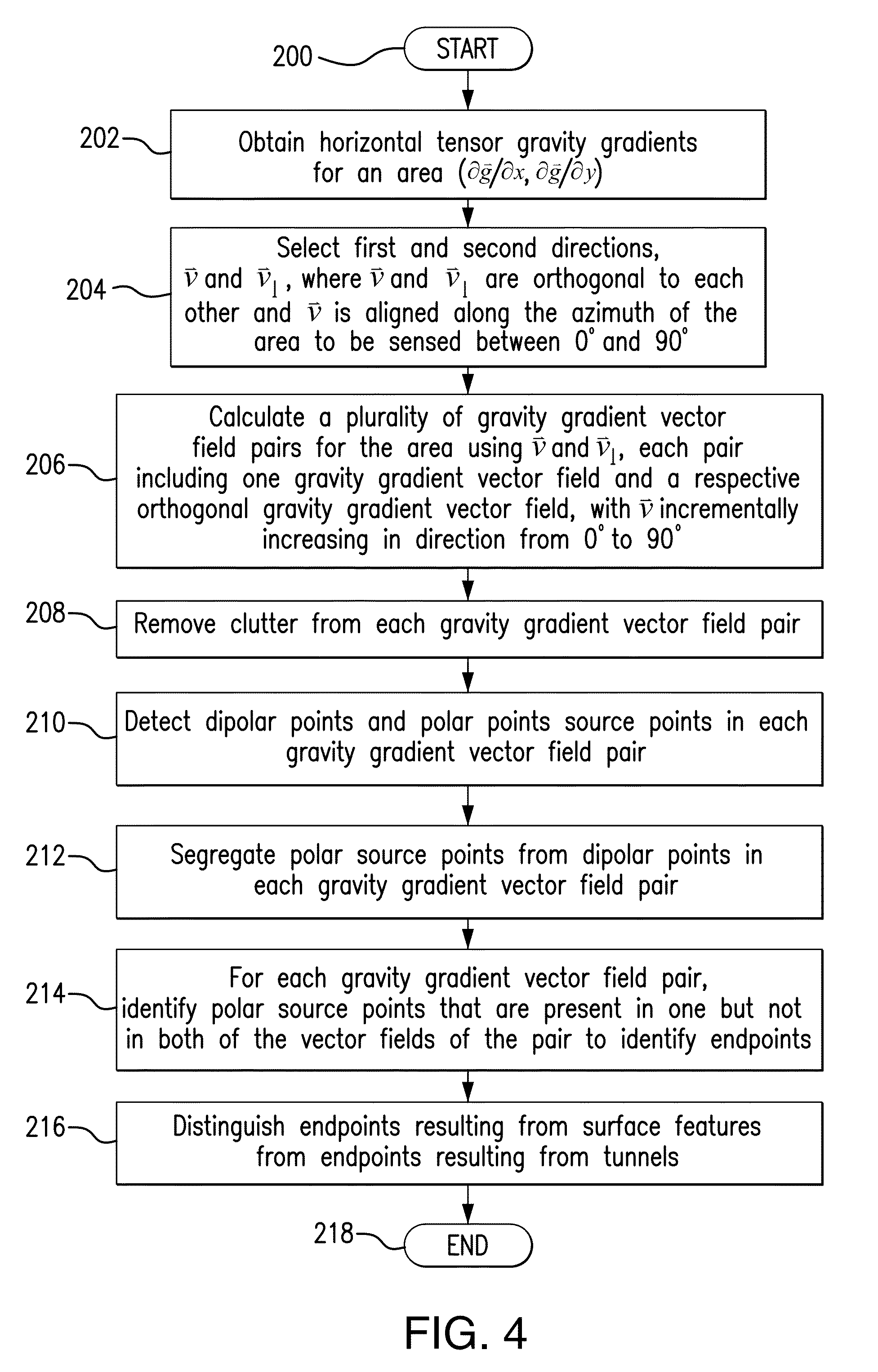Method for detecting underground tunnels
a tunnel detection and underground technology, applied in the field of underground tunnel detection, can solve the problems of detection technologies and methods that struggle with such determinations, and achieve the effects of reducing the clutter in the gravity gradient vector, reducing delays and false readings, and reducing false readings
- Summary
- Abstract
- Description
- Claims
- Application Information
AI Technical Summary
Benefits of technology
Problems solved by technology
Method used
Image
Examples
Embodiment Construction
[0019]Borrowing from conventional electrostatic field theory, the gravity gradient of a localized (spherical) mass anomaly is a conventional dipole field. It can be shown that gravity field gradient (∂g / ∂ν) with respect to a fixed direction ν is equivalent to the electrical field distribution if: 1) a uniform electrical field is applied in the direction parallel to the direction of ν; and 2) every mass is replaced with a dielectric with permittivity equal to that mass. Further, the “gravity dipole moment” of a mass anomaly is always oriented along the direction of the gravity gradient. From these principles, if a long tunnel is viewed as a collection of voids when exposed to a gravity gradient field, all gravity dipole moments cancel except for two equivalent masses located at the tunnel endpoints. These equivalent masses have equal and opposite sign. Hence, to distinguish the signature of a tunnel from localized small voids and other subsurface density variations (SSDVs), i.e., clu...
PUM
 Login to View More
Login to View More Abstract
Description
Claims
Application Information
 Login to View More
Login to View More - R&D
- Intellectual Property
- Life Sciences
- Materials
- Tech Scout
- Unparalleled Data Quality
- Higher Quality Content
- 60% Fewer Hallucinations
Browse by: Latest US Patents, China's latest patents, Technical Efficacy Thesaurus, Application Domain, Technology Topic, Popular Technical Reports.
© 2025 PatSnap. All rights reserved.Legal|Privacy policy|Modern Slavery Act Transparency Statement|Sitemap|About US| Contact US: help@patsnap.com



